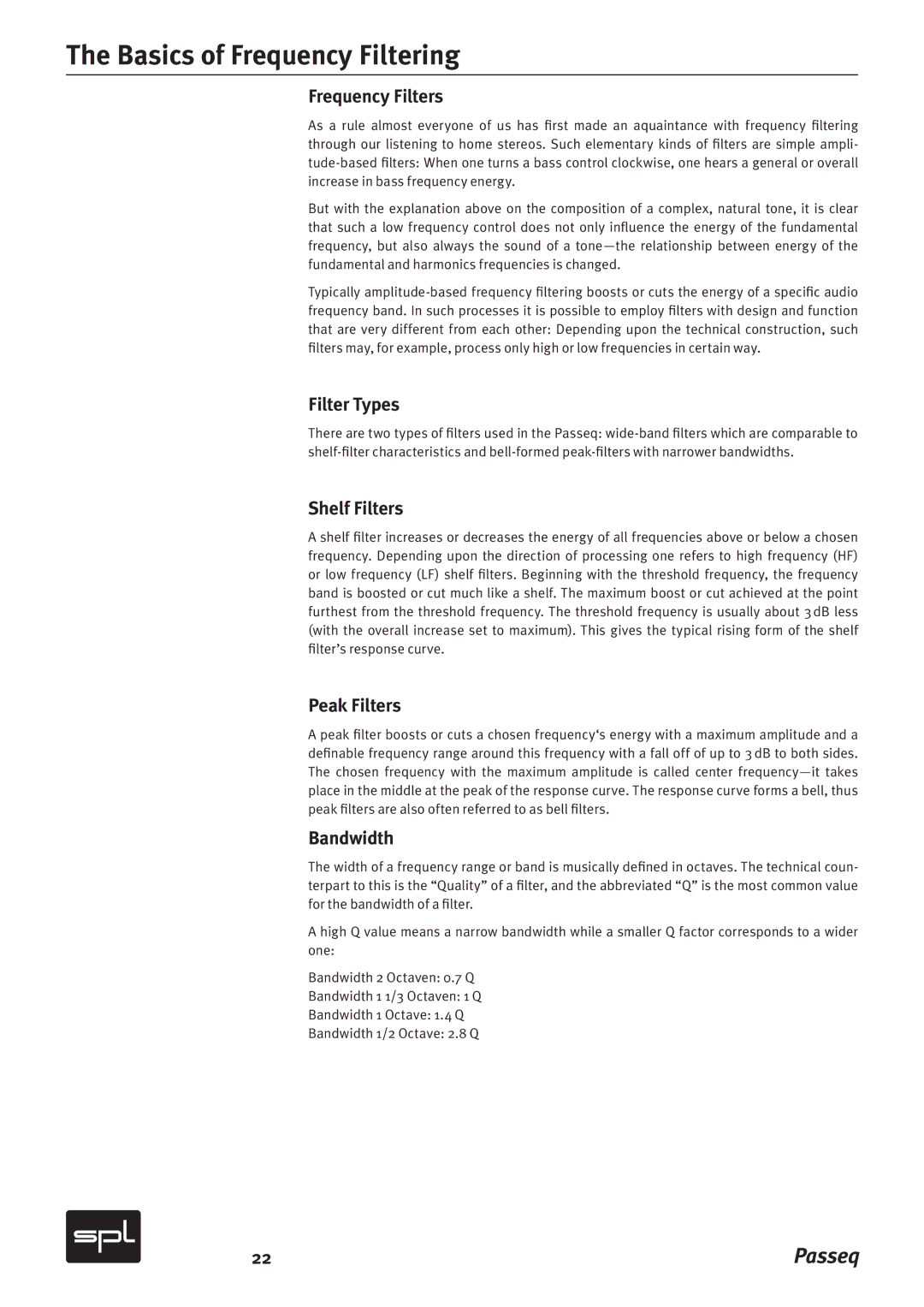2595 specifications
The Sound Performance Lab 2595 is a cutting-edge audio processor designed to elevate mixing and mastering workflows for both professionals and enthusiasts alike. This device stands out in the competitive landscape of audio equipment, thanks to its blend of innovative technologies, high-quality sound processing, and user-friendly features.One of the main features of the 2595 is its dual-channel architecture. This allows users to process two audio signals simultaneously, making it an ideal choice for stereo applications. Designed for flexibility, the device can be used for various purposes, including mixing, mastering, and live sound reinforcement. The 2595 boasts an intuitive layout, making it easy to navigate its range of functions and settings, even for those who may be new to audio processing.
The heart of the 2595 lies in its advanced digital signal processing (DSP) capabilities. The device is equipped with high-resolution converters, allowing for pristine audio quality with minimal latency. This ensures that the integrity of the original sound is maintained, which is a crucial aspect for any serious sound engineer or musician. Additionally, the built-in algorithms are designed to enhance the audio signal intelligently, providing users with options for dynamic range control, spectral processing, and various filtering techniques.
Another notable characteristic of the Sound Performance Lab 2595 is its extensive connectivity options. The device includes both analog and digital I/O, making it compatible with a wide range of audio sources and studio environments. This versatility is essential for professionals who often work with various formats and formats, ensuring that the 2595 can seamlessly integrate into any setup.
The user experience is further enhanced by the inclusion of a bright, user-friendly display that provides real-time feedback on processing parameters. This feature allows users to make precise adjustments quickly, facilitating a more efficient workflow. Furthermore, the 2595's robust construction ensures that it is built to withstand the rigors of both studio and live applications, making it a reliable choice for any audio professional.
In conclusion, the Sound Performance Lab 2595 represents a significant advancement in audio processing technology. With its dual-channel processing capability, high-quality DSP, extensive connectivity options, and user-friendly interface, it caters to a wide range of audio applications while maintaining exceptional fidelity and performance. This makes the 2595 a valuable tool for anyone looking to achieve professional-grade sound in their projects.

